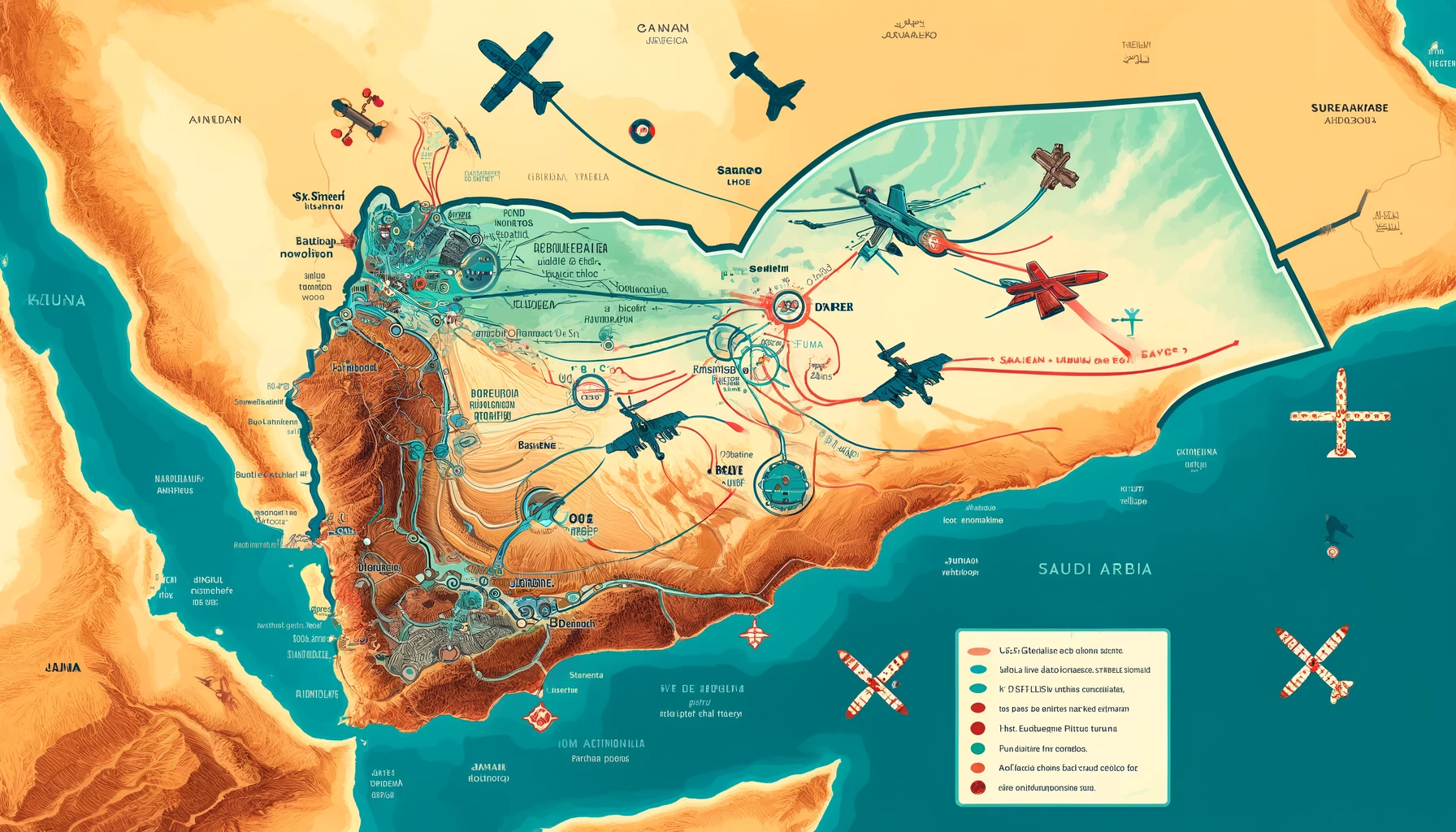
Drone warfare in Yemen has become a pivotal element in the ongoing conflict that grips the region, deeply impacting the dynamics of warfare and the geopolitical landscape. The use of drones, also known as unmanned aerial vehicles (UAVs), has transformed military tactics in the region, offering key players a means to conduct surveillance, gather intelligence, and execute targeted strikes without risking human lives directly.
The conflict in Yemen, which began to escalate in 2015, has seen a mix of local and international forces vying for control, each employing drones in various capacities. Among the key players utilizing drone technology are the United States, Saudi Arabia, and the Houthi rebels. Each has used UAVs for different strategic purposes, shaping the course of military engagements and, by extension, the broader conflict.
The United States has been involved in Yemen primarily through counterterrorism efforts, targeting Al-Qaeda in the Arabian Peninsula (AQAP) and Islamic State (IS) operatives. U.S. drones have been used extensively to carry out strikes aimed at eliminating high-value targets. These operations are part of a broader strategy to combat terrorism without deploying large numbers of ground troops. However, the use of drones by the U.S. has been controversial, with debates over the legality of such strikes and concerns about civilian casualties, which have sometimes undermined local and international support for American activities in the region.
Saudi Arabia, in its role leading a coalition of Arab states, has utilized drones for both surveillance and offensive operations in Yemen. The Saudi-led coalition’s primary objective has been to restore the internationally recognized government of President Abdrabbuh Mansur Hadi, ousted by the Houthi forces. Saudi drone strikes have targeted Houthi positions, command centers, and missile launch sites, attempting to weaken the rebels’ hold on key territories. Like the U.S., Saudi Arabia faces international scrutiny and criticism over airstrikes that have resulted in civilian deaths and significant destruction.
On the other side, the Houthi rebels have increasingly turned to drones as a cost-effective method to counter the technologically superior Saudi-led coalition forces. The Houthis have used drones not only for surveillance but also to carry out cross-border attacks into Saudi Arabia, targeting airports, military installations, and infrastructure. These drone attacks have added a new layer of complexity to the conflict, demonstrating the Houthis’ growing technical capabilities and their ability to strike deep into enemy territory.
The history of drone deployment in Yemen reflects the global proliferation of drone technology and its adoption by both state and non-state actors. Initially, drone usage was dominated by the U.S. as part of its global counterterrorism strategy post-9/11. However, as technology has spread and become more accessible, other actors like the Saudi-led coalition and even the Houthi rebels have acquired capabilities to use drones in both defensive and offensive operations.
Drone warfare in Yemen illustrates a shift in modern warfare, where unmanned systems play an increasingly central role. It highlights the changing nature of conflict, where the battle lines are not only drawn on the ground but also in the control of airspace and information. Drones have introduced new strategic options and ethical challenges, including the impact on civilian populations and the implications of remote warfare.
As the conflict continues, the use of drones is likely to expand further, underscoring the need for international dialogue and regulation to address the complexities and consequences of unmanned warfare. The situation in Yemen serves as a stark reminder of how technology is reshaping not only military strategies but also the political and humanitarian landscapes of modern conflicts.
Map illustrating key locations in Yemen relevant to drone warfare, highlighting areas targeted by drone strikes and the operations of the U.S., Saudi Arabia, and Houthi rebels.